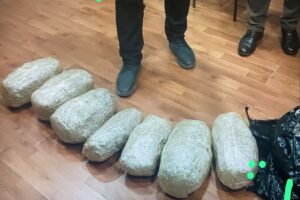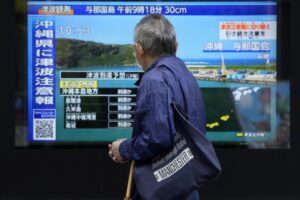Tokyo, 13 March, /AJMEDIA/
After nearly six decades, 10 court decisions and more than 30 years on death row, Tokyo’s High Court on Monday ordered a retrial for convicted murderer and former pro-boxer Iwao Hakamata, 87, offering him a glimmer of hope of being exonerated.
The decision has highlighted the lengthy court proceedings required when seeking a retrial and overturning wrongful convictions under Japan’s judicial system. Initially pronounced as Hakamada, the spelling of his last name was changed to Hakamata in 2021 after a family request to change the official spelling.
The key focus in the case were bloodstains on five pieces of clothing found in a miso barrel that were said to have been worn by the perpetrator when the crime was committed. Prosecutors have described the bloodstains as dark red, but the defense team has claimed the items of clothing were planted since they would have been discolored if they had been in a miso barrel for more than a year.
The incident started when an executive of a miso maker in Shizuoka Prefecture, his wife and their teenage children were stabbed to death at their home before the house was set on fire on June 30, 1966. Some ¥80,000 in cash was also stolen from the home.
More than a month and a half later, police arrested Hakamata, who was an employee of the miso maker, on Aug. 18 of that year, after investigators found traces of gasoline and blood that wasn’t his on Hakamata’s pajamas.
Hakamata had denied his charges, but after 20 days of detention and questioning, admitted in early September to killing the family. Lawyers claim he confessed to the crime due to exhaustion from the interrogation, which lasted for an average of 12 hours each day. Japan’s legal system does not allow lawyers to be present during interrogations.
Despite his initial confession, he later recanted and pleaded not guilty in the first trial hearing in November of 1966 and has since retained that stance.
A new twist in the case came in August 1967, when investigators uncovered the five bloodstained clothes in a miso barrel, more than a year after the crime.
Hakamata has claimed that the clothes are not his, but the Shizuoka District Court sentenced him to death in 1968. During the Tokyo High Court trial, lawyers questioned why the items of clothing, one of which was too small for Hakamata, were not found earlier, but the court rejected those claims and his death row sentence was finalized in 1980.
After his conviction, Hakamata twice sought retrials, with the first request denied by the local, high and supreme courts. But in 2014, the Shizuoka District Court greenlighted his second request — a major breakthrough in the case — allowing him to be released after nearly 50 years in detention. more than 30 years in prison on death row.
But what made the case more complicated was a subsequent split decision by higher courts. After prosecutors appealed the 2014 decision, the Tokyo High Court denied the retrial request in 2018 but the Supreme Court sent the case back to the high court for further deliberation in 2020.









































